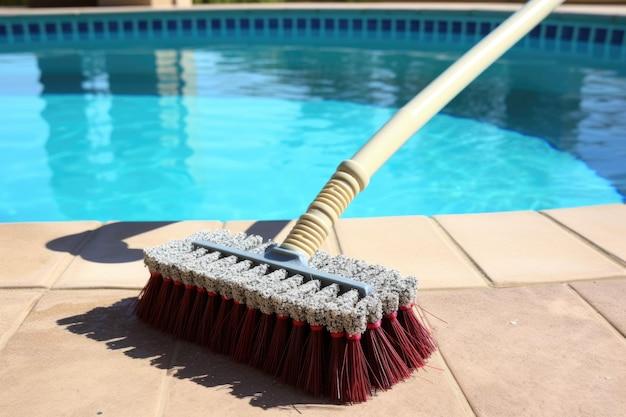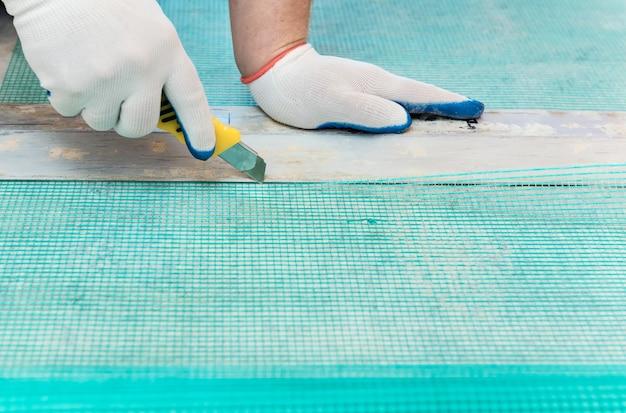Epoxy resin has gained popularity in various DIY projects, from coating countertops to creating stunning artwork. However, there can be occasions when your epoxy doesn’t cure properly, leaving you with a frustratingly sticky or tacky surface. But fear not! In this blog post, we will explore whether it is possible to clear coat over tacky epoxy, how to fix the issue, and provide answers to other handy questions related to epoxy and polyurethane.
So, if you’ve ever found yourself asking questions like “Can you put polyurethane over tacky resin?” or “How do you fix a bad epoxy?”, you’ve come to the right place! We’ll address common dilemmas, such as how to remove tacky epoxy, what happens if you add too much hardener, and how to tackle epoxy that remains soft. With our expert tips and tricks, you’ll soon be on your way to achieving a flawless and durable epoxy finish. Let’s dive in!
Can You Apply Clear Coat over Sticky Epoxy
So, you’ve just finished an epoxy project and you’re eager to give it that shiny, glossy finish with a clear coat. But wait, your epoxy is still tacky! You may be wondering, “Can you apply clear coat over tacky epoxy?” Well, my friend, let’s dive into this sticky situation and find out what you can do.
Understanding the Stickiness
Before we get into the solution, it’s important to understand why epoxy can be tacky in the first place. Epoxy resin is a two-part mixture consisting of a resin and a hardener. When these two components are combined, a chemical reaction occurs, causing the mixture to cure and harden.
However, factors such as temperature, humidity, incorrect mixing ratios, or improper curing can all contribute to a sticky epoxy surface. Don’t worry; it happens to the best of us. The good news is that there are ways to fix this and still achieve that flawless finish.
Patience is a Virtue
The first thing you need to remember when dealing with tacky epoxy is to be patient. Epoxy curing times can vary depending on the type of epoxy you’re using and the environmental conditions. It’s crucial to allow ample time for the epoxy to cure before attempting any additional coatings.
Testing the Tackiness
To check if your epoxy is no longer tacky, lightly touch a small, inconspicuous area with your finger. If it leaves a fingerprint or feels sticky, it’s not fully cured. Ideally, you want the surface to be smooth and hard to the touch. Patience, my friend, patience!
Sanding the Sticky Situation
If your epoxy is still sticky, fret not, there’s a simple solution – sanding. Grab some fine-grit sandpaper or a sanding block and gently sand the surface of the tacky epoxy. This process will remove the stickiness and create a smooth canvas for your next coat.
Remember, don’t go overboard with the sanding. Aim to remove only the tacky layer, and be cautious not to damage the underlying epoxy.
Cleaning and Prepping
Once you’ve sanded away the sticky epoxy, it’s crucial to clean the surface thoroughly. Use a mild detergent or epoxy-specific cleaner to remove any dust, debris, or sanding residue. Ensure the surface is completely dry before proceeding to the next step.
Coat with Confidence
Now that you’ve tackled the tackiness issue, it’s time to apply the clear coat with confidence. Choose a high-quality clear epoxy or polyurethane topcoat that is compatible with your epoxy resin. Follow the manufacturer’s instructions for application, mixing ratios, and curing times.
Apply the clear coat in thin, even layers, allowing ample drying time between each coat. This will ensure a smooth and flawless finish, giving your epoxy project that professional touch it deserves.
Wrapping Up
So, to answer the burning question, “Can you clear coat over tacky epoxy?” Yes, you can! By being patient, sanding the tacky epoxy, cleaning the surface, and applying a compatible clear coat, you can rescue your project from the sticky situation and achieve that desirable glossy finish. Remember, my friend, patience and perseverance are key – the results will be worth it! Happy epoxying!
FAQ: Can You Clear Coat Over Tacky Epoxy
How Do You Remove Tacky Epoxy?
If you find yourself stuck with tacky epoxy, don’t panic! There are a few methods you can try to fix this sticky situation. One option is to sand the epoxy gently with fine-grit sandpaper to remove the tackiness. Alternatively, you can use a heat gun to carefully warm up the epoxy and encourage it to cure properly. Remember, patience is key!
What Dissolves Cured Epoxy Resin?
Once epoxy resin has fully cured, it becomes a tough nut to crack. You can’t simply dissolve it with any ordinary household solvent. However, using a specialized epoxy solvent or acetone can help to soften and remove cured epoxy resin. Be sure to follow the manufacturer’s instructions and work in a well-ventilated area.
How Do You Fix Tacky Polyurethane?
Dealing with tacky polyurethane can be quite frustrating, but fear not! One solution is to lightly sand the sticky surface with fine-grit sandpaper. This will remove the tackiness and create a smooth surface. After sanding, wipe away any dust and apply a fresh coat of polyurethane. Your sticky woes will be a thing of the past!
Can You Put Polyurethane Over Tacky Resin?
Ah, the eternal question of whether to mix two sticky substances! In this case, adding polyurethane over tacky epoxy resin is not recommended. The polyurethane may not adhere properly to the tacky surface, resulting in an unsightly mess. It’s best to fix the tackiness issue with the epoxy before adding any more layers.
How Do You Fix a Bad Epoxy?
If you’ve ended up with a bad batch of epoxy, don’t despair—there’s still hope! You can try sanding the surface to remove any imperfections or unevenness. If the problem persists, you may need to strip off the entire layer of epoxy and start fresh. Sometimes, it’s better to tackle the problem head-on to achieve the perfect finish.
Can You Put Polyurethane Over Epoxy?
Now, here’s a delightful combo! Yes, you can indeed apply polyurethane over epoxy. Once the epoxy has fully cured and is no longer tacky, you can confidently add a layer of polyurethane for added protection and a glossy finish. Just make sure to follow the manufacturer’s instructions and apply the polyurethane in thin, even coats.
Is One Coat of Epoxy Enough?
Plenty of things in life require more than one coat, and epoxy is no exception. In most cases, a single coat of epoxy may not be sufficient to achieve the desired result. It’s recommended to apply multiple coats, allowing each layer to cure properly before adding the next. Building up the epoxy layers will provide a durable and beautiful finish.
What Do You Do with Tacky Epoxy?
Ah, the ever-persistent question of what to do with tacky epoxy! If your epoxy is still sticky, the best course of action is to address the issue promptly. You can try sanding it to remove the tackiness or using a heat gun to encourage proper curing. Remember, tacky epoxy is not a lost cause—it just needs a little extra love and attention!
Why Is My UV Resin Still Tacky?
UV resin is a nifty invention, but sometimes it can be a bit stubborn. If your UV resin is still tacky after curing, it may be due to inadequate curing time or insufficient UV light exposure. Make sure you’re following the manufacturer’s guidelines for curing time and expose the resin to UV light for the recommended duration. Patience, dear epoxy enthusiast!
Should You Sand Between Coats of Epoxy?
Ahhh, the contemplations of sanding between coats! While it’s not an absolute necessity, sanding between coats of epoxy can work wonders for the final finish. Sanding helps create a smooth surface and removes any imperfections or dust particles that may have settled during the curing process. So, dust off that sandpaper and give it a gentle go!
How Do You Remove Epoxy That Didn’t Harden?
When epoxy fails to harden, it can be frustrating. But fret not, for there is a solution! You can try applying heat using a heat gun or hairdryer to soften the epoxy, making it easier to remove. Another option is to use a solvent specifically designed to dissolve uncured epoxy. Once the epoxy is softened or dissolved, gently scrape it away. Crisis averted!
What Happens If You Add Too Much Hardener to Epoxy?
Ah, the age-old tale of too much of a good thing! Adding too much hardener to epoxy can cause a multitude of problems. It can lead to an excessive exothermic reaction, resulting in a hot and smelly mess. The epoxy may also take much longer to cure, or worse, it may never fully harden. So, be cautious and follow the recommended mixing ratios to avoid epoxy disaster!
Why Is My Epoxy Resin Still Soft?
If your epoxy resin is softer than a marshmallow, something has gone awry. The culprit could be improper measuring of epoxy and hardener ratios, insufficient mixing, or incorrect curing conditions. Assess the root cause of the problem, make necessary adjustments, and consider recoating with a properly mixed and applied layer of epoxy. Remember, we’re aiming for solid results, not squishy surprises!
How Do You Fix Tacky Resin?
Ah, tacky resin strikes again! To fix tacky resin, consider lightly sanding the surface to remove the tackiness. Use a fine-grit sandpaper and take care not to overdo it. Once the resin is smooth, clean away any dust and apply a new coat of resin. With proper curing and a little TLC, your resin will no longer stick around!
Can You Put Clear Epoxy Over Epoxy?
The answer is crystal clear—yes, you can! Applying a clear epoxy over an existing layer is a common technique used to enhance the durability and depth of the finish. Before doing so, ensure that the previous layer has cured completely. Then, follow the application instructions for the new layer of clear epoxy. Layer it on for that sparkling, multi-dimensional effect!
Can You Fix Bendy Resin?
If your resin has turned bendy instead of beautifully solid, don’t despair! You can attempt to fix bendy resin by gently heating it with a heat gun or hairdryer. Apply heat to the resin in a circular motion, being careful not to overheat or scorch the surface. As the resin warms up, it should regain its firmness and become rigid once again. Ta-da!
Can You Fix Tacky Epoxy?
Ah, the million-dollar question—can you fix tacky epoxy? The answer is a resounding “yes!” Tacky epoxy can be remedied by either sanding the surface or applying heat to encourage proper curing. With a little bit of effort and the right approach, your tacky epoxy troubles will soon be a thing of the past. Hang in there, epoxy hero!

